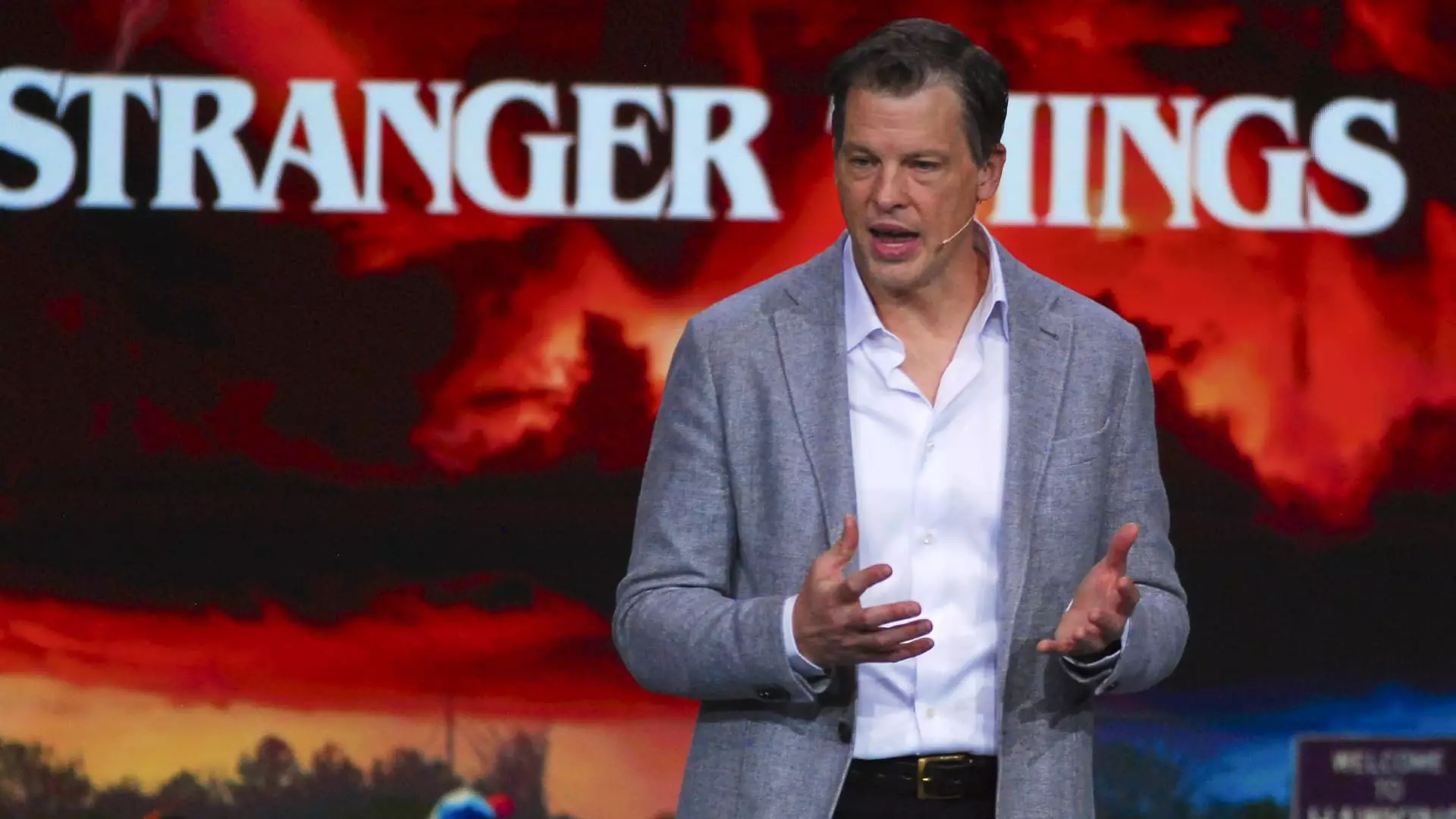As Netflix reported its first-quarter results, it’s hard not to marvel at the company’s robust operating margin of 31.7%, surpassing analyst expectations of 28.5%. This would naturally lead one to believe that all is rosy at Netflix, as they also projected a strong second-quarter outlook of 33.3%, comfortably above the consensus estimate. However, if we scrutinize these numbers and the context in which they’re presented, a more complex picture emerges. Is Netflix truly on stable ground, or is it merely riding the momentum of a market that remains volatile and unpredictable?
The Context of Economic Turbulence
Contrary to Netflix’s optimistic tone, consumer sentiment in the U.S. is teetering on the brink of despair. With figures reaching their second-lowest level since 1952, it’s essential to recognize that external economic pressures, like tariff policies and inflation, can severely impact discretionary spending. Streaming services like Netflix may seem like an affordable luxury now, but there’s a threshold where price sensitivity changes. The ad-supported subscription model, priced at $7.99, may draw in budget-conscious users, but it may not be enough to combat a broader economic downturn. Netflix’s statement about being “ahead” of its guidance for Q1 suggests a proactive approach, but it raises eyebrows when they do not modify their longer-term projections, hinting at a lack of confidence in sustained growth.
Questioning the Confidence
Co-CEO Greg Peters suggests that Netflix’s historical resilience to economic downturns will shield it this time as well. But relying on past performance can be a dangerous folly. The global climate is evolving, and with it, consumer behavior changes. If economic forecasts indicate consumer pullbacks, steak dinners and vacations will understandably take precedence over streaming subscriptions. The real test will come when Netflix faces customer churn, as new entertainment options gain traction and competition skyrockets. Netflix is no longer the only game in town; new entrants continually vie for attention and subscription dollars, creating a scenario where loyalty could be tested.
The Blind Spot of Subscriber Metrics
One of the most startling developments is Netflix’s decision to stop reporting quarterly subscriber numbers. By diminishing transparency in a critical metric, are they protecting their image from a potential slowdown? After all, revenue figures are important, but subscriber count reveals the real story behind the popularity and acceptance of the service. Without this crucial context, Netflix could be masking underlying issues affecting customer retention.
“It’s stable and strong,” Peters claims about retention rates. But how strong is it really if we can no longer track those numbers? If churn rises due to an impending economic crunch, Netflix could find itself bewildered by a rapid shift in user engagement. They may look good on paper now, but lurking beneath those impressive margins are vulnerabilities that could be exposed in the months ahead.
The reality is that while a dazzling earnings report is a reason to celebrate, it is prudent for investors and the market to remain skeptical, probing the non-quantitative factors that may well dictate Netflix’s trajectory in an unpredictable economy.

